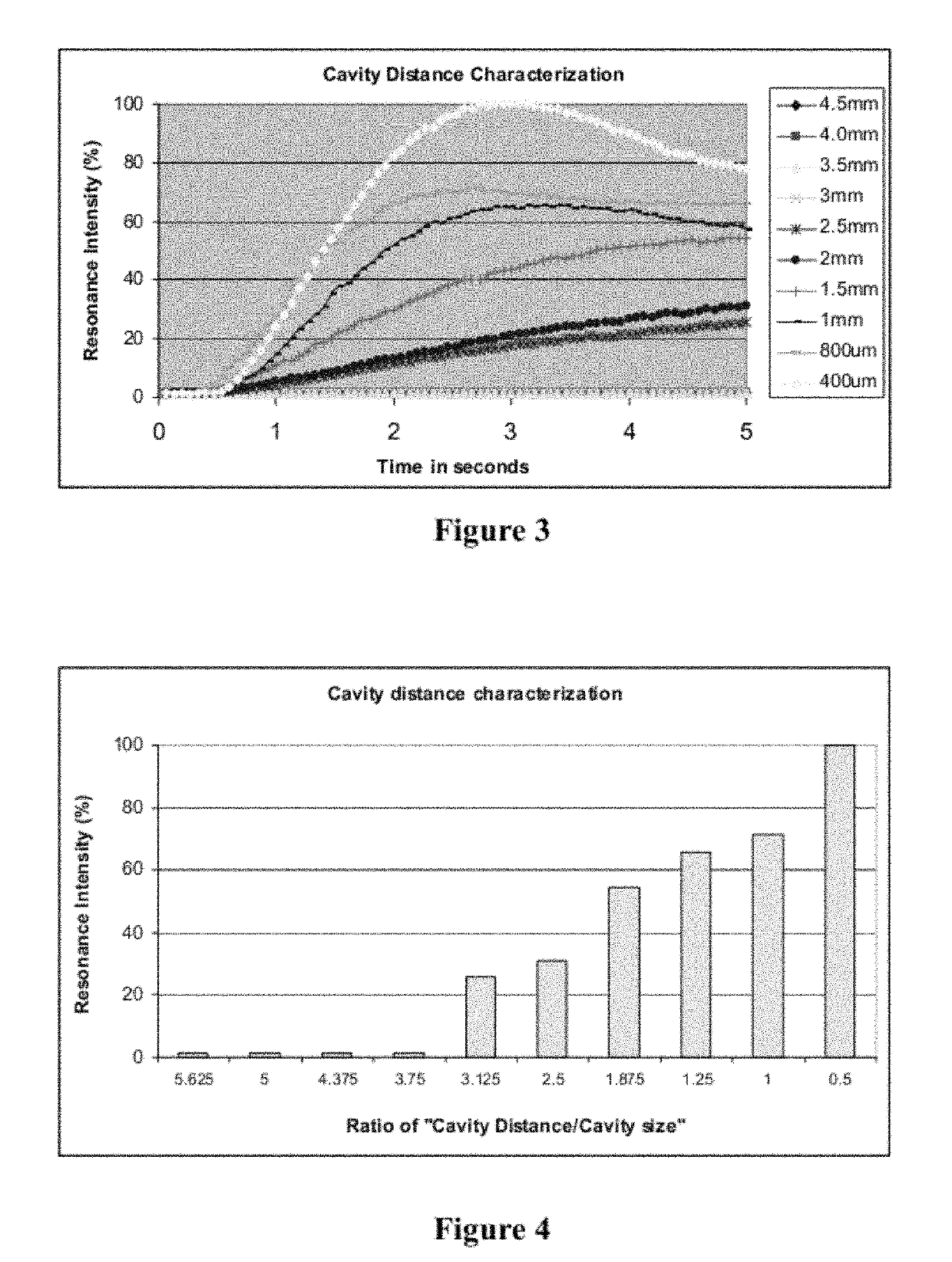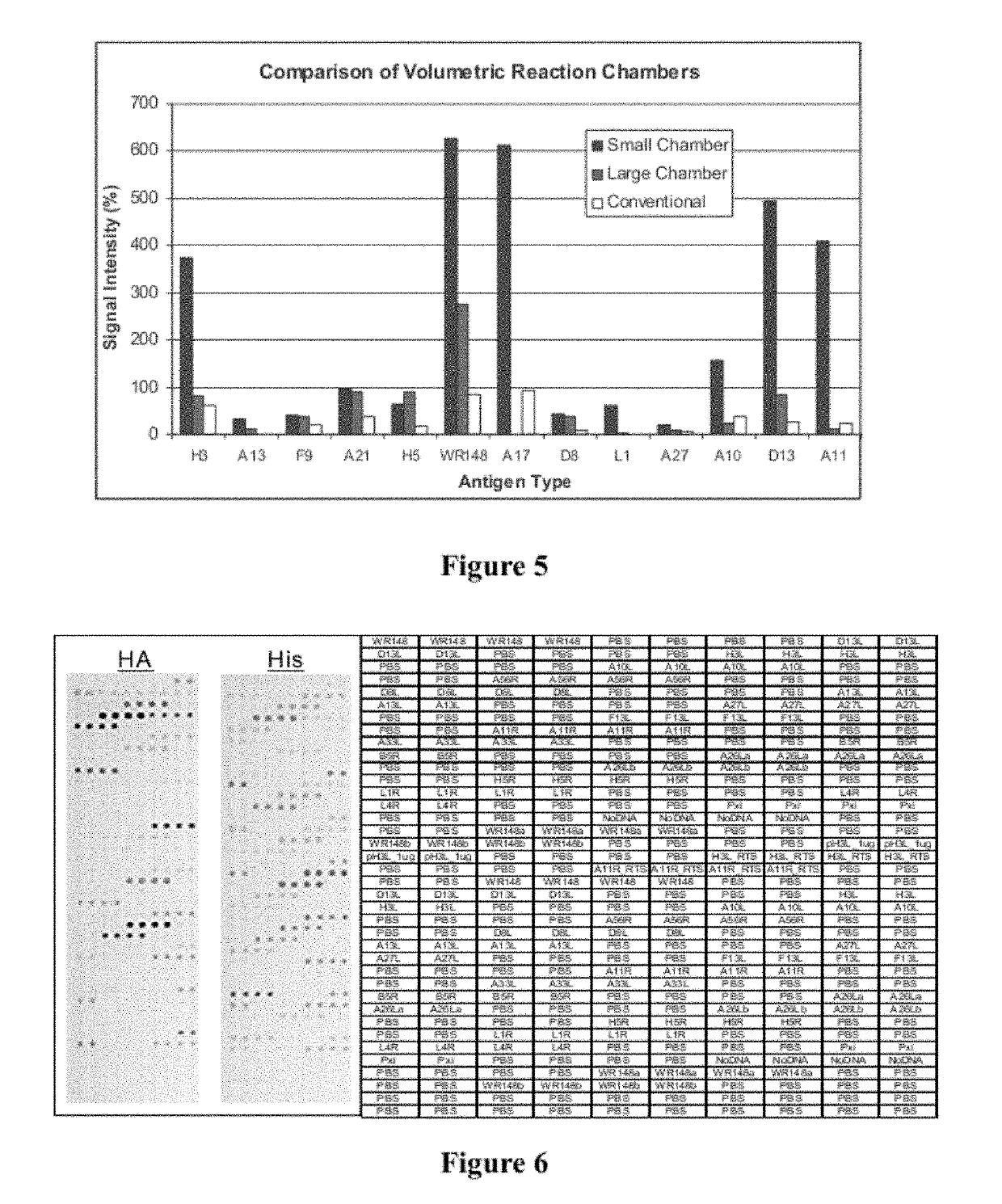Microfluidic devices and methods
a microfluidic and protein technology, applied in the field of diagnostic devices and methods, can solve the problems of large amount of user-handling, complex optical detection, and failure of most antibody-based tests to provide multiplex formats,
- Summary
- Abstract
- Description
- Claims
- Application Information
AI Technical Summary
Benefits of technology
Problems solved by technology
Method used
Image
Examples
examples
[0044]PCR amplification of linear acceptor vector: Plasmid pXT7 (10 μg; 3.2 kb, KanR) was linearized with BamHI (0.1 μg / μl DNA / 0.1 mg / ml BSA / 0.2 units / μl BamHI; 37° C. for 4 hr; additional BamHI was added to 0.4 units / μl at 37° C. overnight). The digest was purified using a PCR purification kit (Qiagen, Valencia, Calif.), quantified by fluorometry using Picogreen (Molecular Probes, Carlsbad, Calif.) according to the manufacturer's instructions, and verified by agarose gel electrophoresis (1 μg). One ng of this material was used to generate the linear acceptor vector in a 50-μl PCR using 0.5 μM each of suitable primers, and 0.02 units / μl Taq DNA polymerase (Fisher Scientific, buffer A) / 0.1 mg / ml gelatin (Porcine, Bloom 300; Sigma, G-1890) / 0.2 mM each dNTP with the following conditions: initial denaturation of 95° C. for 5 min; 30 cycles of 95° C. for 0.5 min, 50° C. for 0.5 min, and 72° C. for 3.5 min; and a final extension of 72° C. for 10 min.
[0045]PCR amplification of ORF insert: ...
PUM
 Login to View More
Login to View More Abstract
Description
Claims
Application Information
 Login to View More
Login to View More - R&D
- Intellectual Property
- Life Sciences
- Materials
- Tech Scout
- Unparalleled Data Quality
- Higher Quality Content
- 60% Fewer Hallucinations
Browse by: Latest US Patents, China's latest patents, Technical Efficacy Thesaurus, Application Domain, Technology Topic, Popular Technical Reports.
© 2025 PatSnap. All rights reserved.Legal|Privacy policy|Modern Slavery Act Transparency Statement|Sitemap|About US| Contact US: help@patsnap.com



